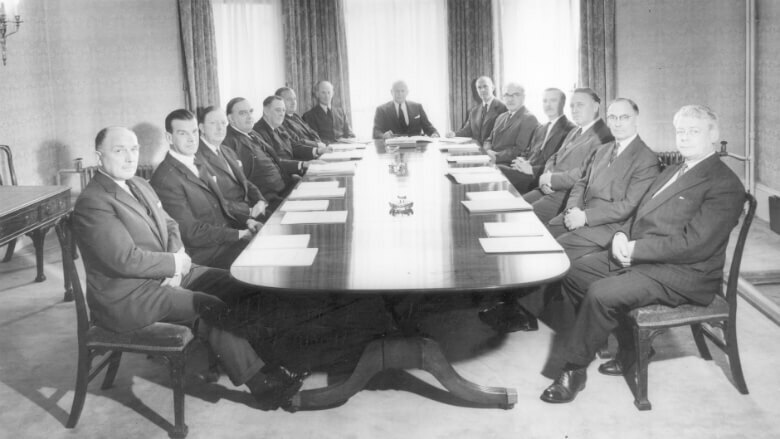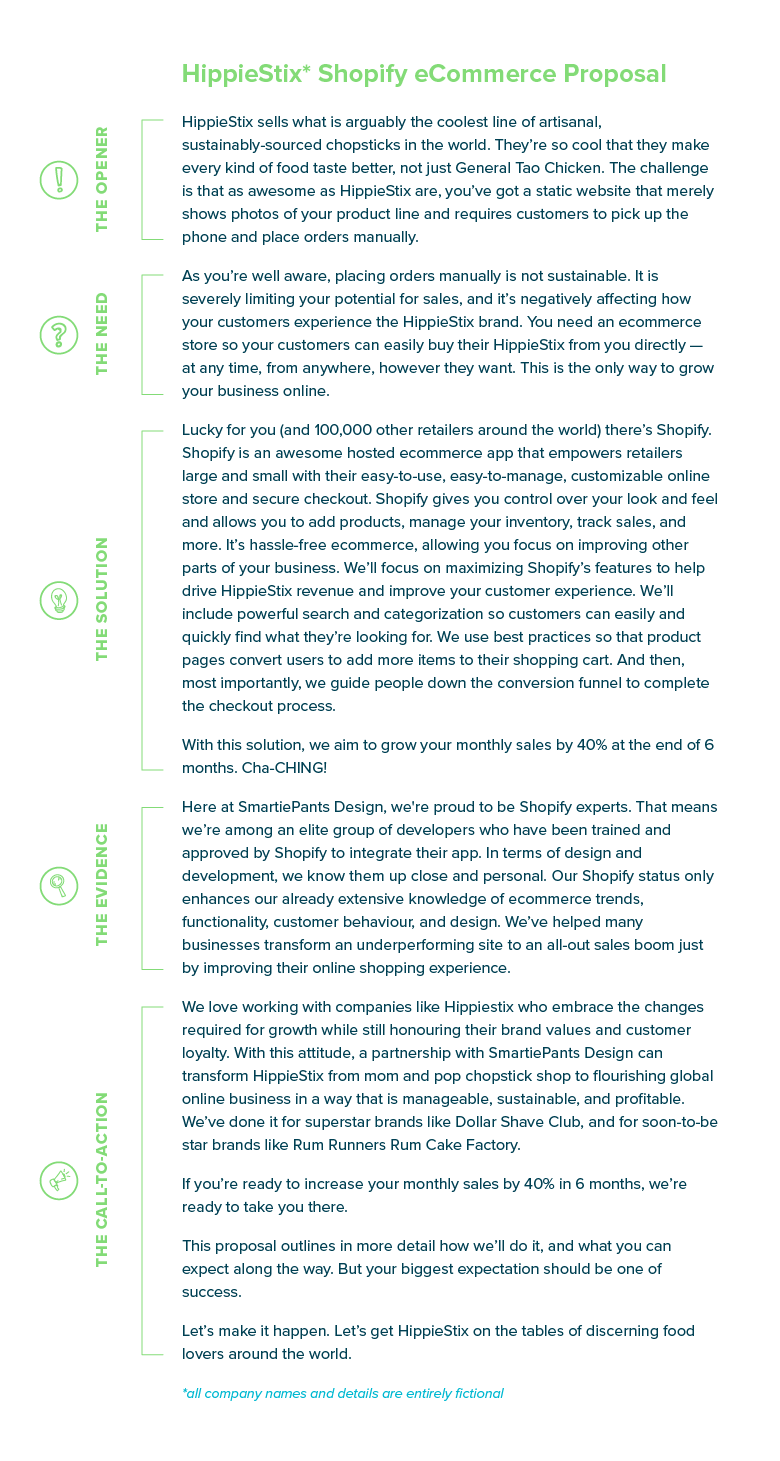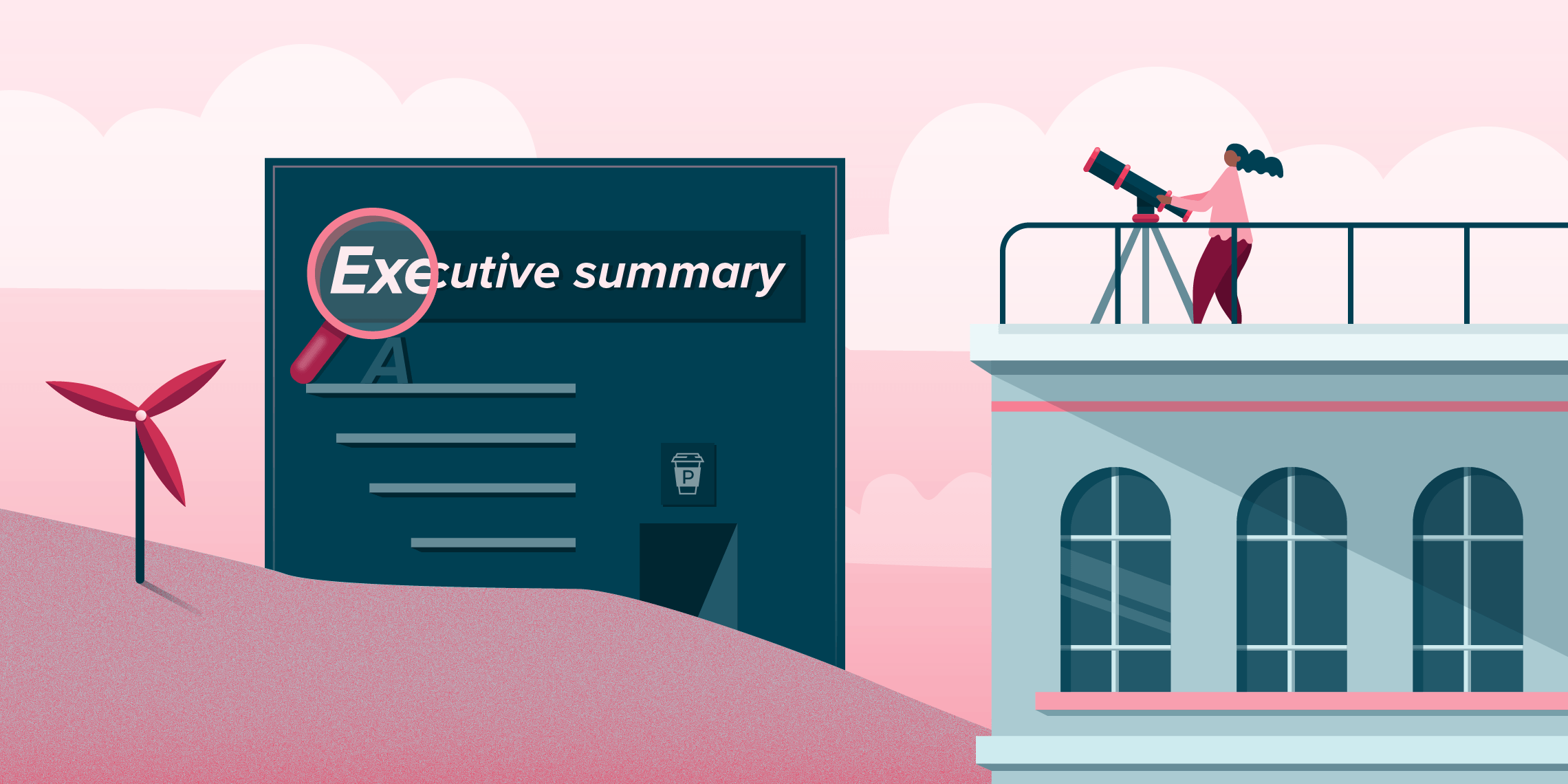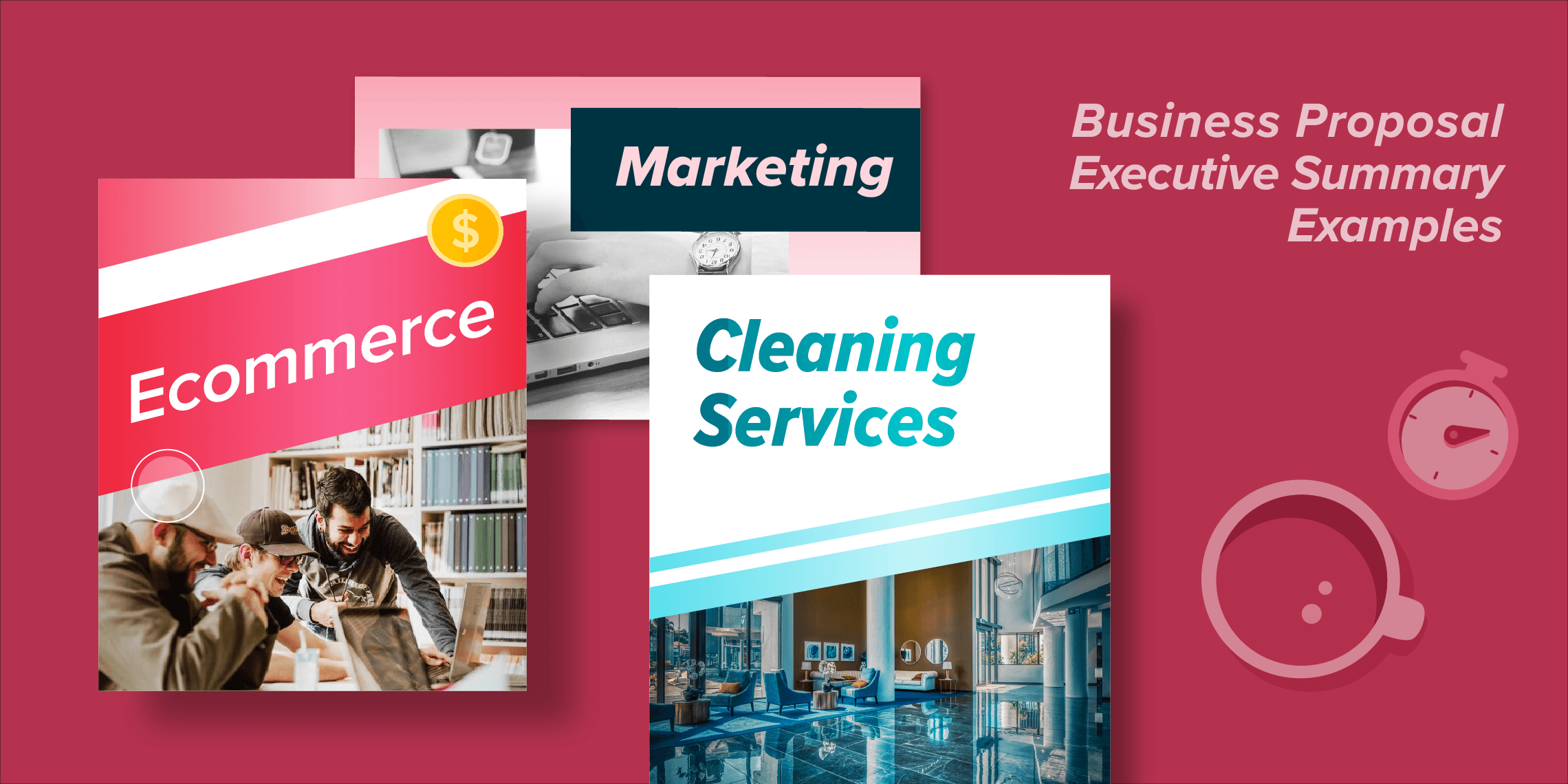(This article was originally published on 7/4/2017 and updated on 5/20/2021)
There is so much dissent surrounding the executive summary of a proposal— Where does the executive summary go? How long should an executive summary be? How do you format an executive summary? These uncertainties can add to the already stressful task of getting a winning proposal written, designed, and delivered to the prospective client on time. It’s time to set things straight.
What is an executive summary?
The executive summary is arguably the most valuable component of any proposal. It serves as an introduction, allowing readers to quickly get acquainted with your proposal by outlining what’s to come. It gives you an opportunity to sell your proposed solution and explain why the prospective client should choose you over the competition.
The purpose of an executive summary
First of all, the term “executive summary” needs a rebrand. The name itself speaks of stuffy suits, boring, jargon-filled reports, and boardrooms filled with cigar smoke and people ready to say no.

They can’t wait to read your executive summary.
In all seriousness, the word “summary” can be misleading, and this is the first mistake people often make when it comes to writing their executive summary. They think that the purpose of an executive summary is to explain the entire proposal in 250 words. But it’s not.
The real purpose of an executive summary is to engage your prospective client. It helps the prospect quickly decide whether they're going to read the rest of the proposal, pass it on to other decision-makers, or if it's destined for the recycle bin.
So you better make it good.
The executive summary of your proposal needs to grab the reader’s attention and pique their interest. Even though you and your team spent painstaking hours writing this proposal, selecting just the right graphics, and coming up with the best solution for your potential client’s problem, they may only read this one page and then flip to your pricing table.
That’s why this section needs to be specific and persuasive, with a focus on results and benefits of your company/product/service, rather than describing features. You can save the features for the body of the proposal.
When should you write the executive summary?
Whether you write the executive summary before or after the rest of the proposal is as contentious as the debate about the best part of a Reese’s Peanut Butter Cup: the chocolate or the peanut butter.
Some people feel that you should write the executive summary first because it can help you outline your concept and organize your thoughts for the entire proposal. That way, it acts as a guide for members of your team who are tasked with preparing sections of the proposal, ensuring that the big idea is consistent throughout, and that all necessary components are included.
Others feel strongly that you should write the executive summary after you’ve prepared the rest of the proposal because you’ve had a chance to work through the objectives and the solutions, and you’ll have a better idea of what to say and how to say it. Plus, things may have changed since you first started the proposal, so you might need to adjust your approach.
Format of an effective proposal executive summary
The format of an executive summary is an important consideration that many people overlook. What do you include? How do you arrange the sections? To help you get started, here are the components of a good proposal executive summary:
The Opener: Capture their attention
You need an opener that's compelling. A way to get the potential client’s attention right away, and you do that by talking about THEM, not about you. Focus on the issue and the result, but be direct, concise, and evocative.
This is the time to hook them in — get them excited about what they’re going to read next.
The Need: We get it
Before a client hires you, they want to know that you get them. You can’t solve a problem that you don’t understand. This section of the executive summary is where you demonstrate your grasp of the situation. You could include a bit of your own research or a brief reference to your company’s experience dealing with a similar situation. You should also talk about how the client will benefit from solving the problem — what will change, the positive outcomes, the results.
Again, the focus here is on the prospect and their challenge, not on you and your company.
The Proposed Solution: We’ve got it
Now you’re in the spotlight. This section is where you talk about the brilliant solution you’re proposing and why it will work. But remember, this is just an overview. The prospect can read all the delicious details in the proposal, so keep it high level but still provide enough detail to convince them you have something specific and well thought out for them.
This section should start to provide your prospect with a sense of relief and get them excited about the result.
The Evidence: We can do it
It's time to show your stuff. Talk about why your company, your team, or your product is not only willing to take this challenge on, but how and why you're qualified to do so. Demonstrate what sets you apart and why they should choose you over the competition.
Maybe this is your niche market and you have lots of experience helping other companies with a similar issue. Maybe it’s a particular skill set your team possesses, your research, your algorithm, or your project management process. Or maybe you’ve won 27 Academy Awards for best picture, and you know you can make this a hit.
Talk about WHY you can make this a successful project and deliver results, but (broken record) keep it brief.
The Call to Action: Let’s do it
Keeping in mind that the purpose of the executive summary is to sell, it’s now time to close the deal.
Make the client feel like they have no other chance for happiness than to hire you and proves your solution is the one that will make their dreams come true.
Talk about why you want to work with them — a little flattery goes a long way — and about how, as partners, you will be successful.
Executive Summary Example
Here's an example of an executive summary made using a customizable proposal template from Proposify's gallery.
Of course every executive summary needs to be tailored to your specific project, your potential client's needs, and your brand voice. But if you're looking for more inspiration, we have many other business proposal templates that you can customize yourself.

Executive summary tips: The Do’s and Don’ts
Some other important points and guidelines to keep in mind when writing your executive summary:
Do: use a template for your executive summary
Getting started is the hardest part of writing a proposal executive summary. If you’re struggling to get the ball rolling, consider using a business proposal template that includes a sample executive summary. This can help ensure that you cover everything an executive summary should include.
Don’t: make it too long
Some people recommend that the executive summary should be 10% of your entire proposal, but it’s best if you try to keep it to one page, two tops if it’s a larger proposal. Be mindful that if you’re working on an RFP, they may already set out a particular length limit, so you’ll want to stick to that.
Don’t: use jargon
This rule applies to everything but is especially important when writing proposals. Jargon can act as a smokescreen to mask the fact that someone doesn’t really know what they’re talking about, or it can confuse people if they’re not familiar with the same terms.
Don’t: use overly technical language
Unless you are absolutely sure that the only person who will read the executive summary is an engineer or a developer or someone who will understand exactly what you’re talking about, don’t get too technical. In some situations, you may need to reference certain details, but remember that this is a persuasive document—sell the benefits, not the features. Save the tech stuff for the proposal.
Don’t: talk about your company history
The history of your company does not belong in the executive summary. After all, the executive summary is about your prospective client, not about you. However, if it is appropriate and relevant, put it in the body of the proposal under “About Us” or something.
Do: focus on your prospective client
Think about what they want to know, not what you want to tell them. Like any piece of copy, you need to write for your audience, so make sure you think about them; what turns them off and what turns them on.
Do: mention your potential client’s company name
People like to hear their names and the same holds true for businesses. Make sure you reference your prospect’s full company name several times in the executive summary, so they feel like you’re focused on them.
Do: use plain language
The regular rules for writing apply to executive summaries. Use simple, short sentences that are clear and can be understood at almost any reading level, especially if you might be writing for people whose first language is not English. Don’t be pretentious - you’ll come off like an ass. Be concise, and be persuasive. Here are some more writing tips for writing an effective business proposal.
Do: proofread and edit
This probably goes without saying, but you really, really don’t want any typos in your executive summary. Get more than one set of eyes on your document before it goes out, and preferably someone who wasn’t involved in its creation.
Conclusion
We hope this executive summary guide will help turn your ho-hum executive summaries into wicked pitches of excellence. Remember to be persuasive, not pedantic. And if anyone has a suggestion on a new name for executive summary, bring it on.



